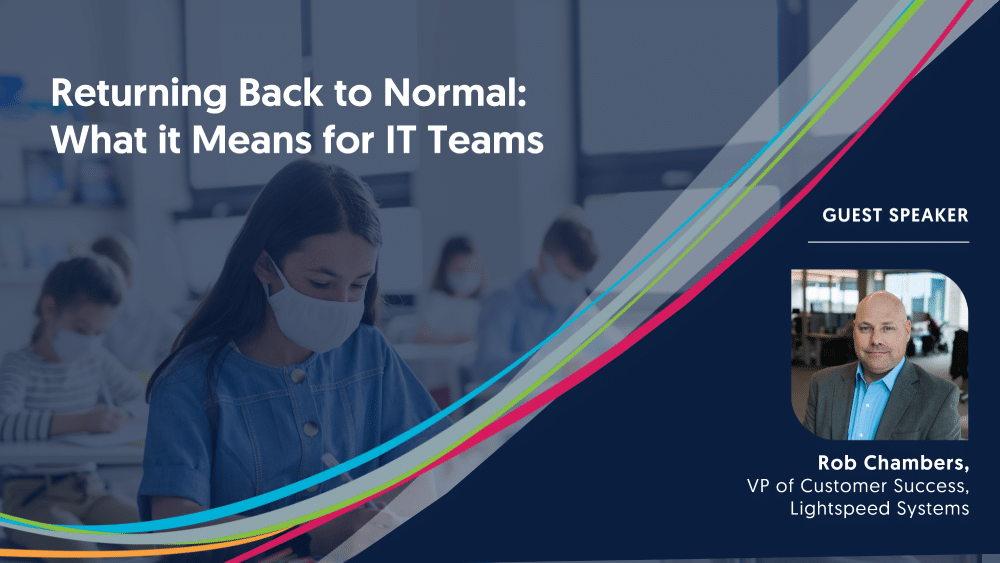
Rob Chambers, VP of Customer Success at Lightspeed Systems, discusses how making data-driven decisions around the types of device and software purchases that should remain in place as your district leaders plan for a return to in-person learning.
In this webinar, you will learn:
- How to eliminate tech budget guesswork
- Identify critical purchases and potential cost savings to optimize your tech spend
- How Lightspeed Analytics gives districts hard data around necessary and unnecessary tech purchases to ensure your district is getting optimal value
- New sources of funding for your online security purchases
Rob Chambers is the VP of Global Customer Success at Lightspeed, planning and executing innovative product roadmaps that uniquely address the needs of our education customers. Before joining Lightspeed, Rob held key positions in educational technology – the Director of Technology Services at Rosedale Union School District in Bakersfield, CA; a consultant for FCMAT; an adjunct Computer Studies faculty member at Bakersfield College; and network manager for the Kern Community College District. He also served on the California Educational Technology Professionals Association (CETPA) Board of Directors from 2005-2007.